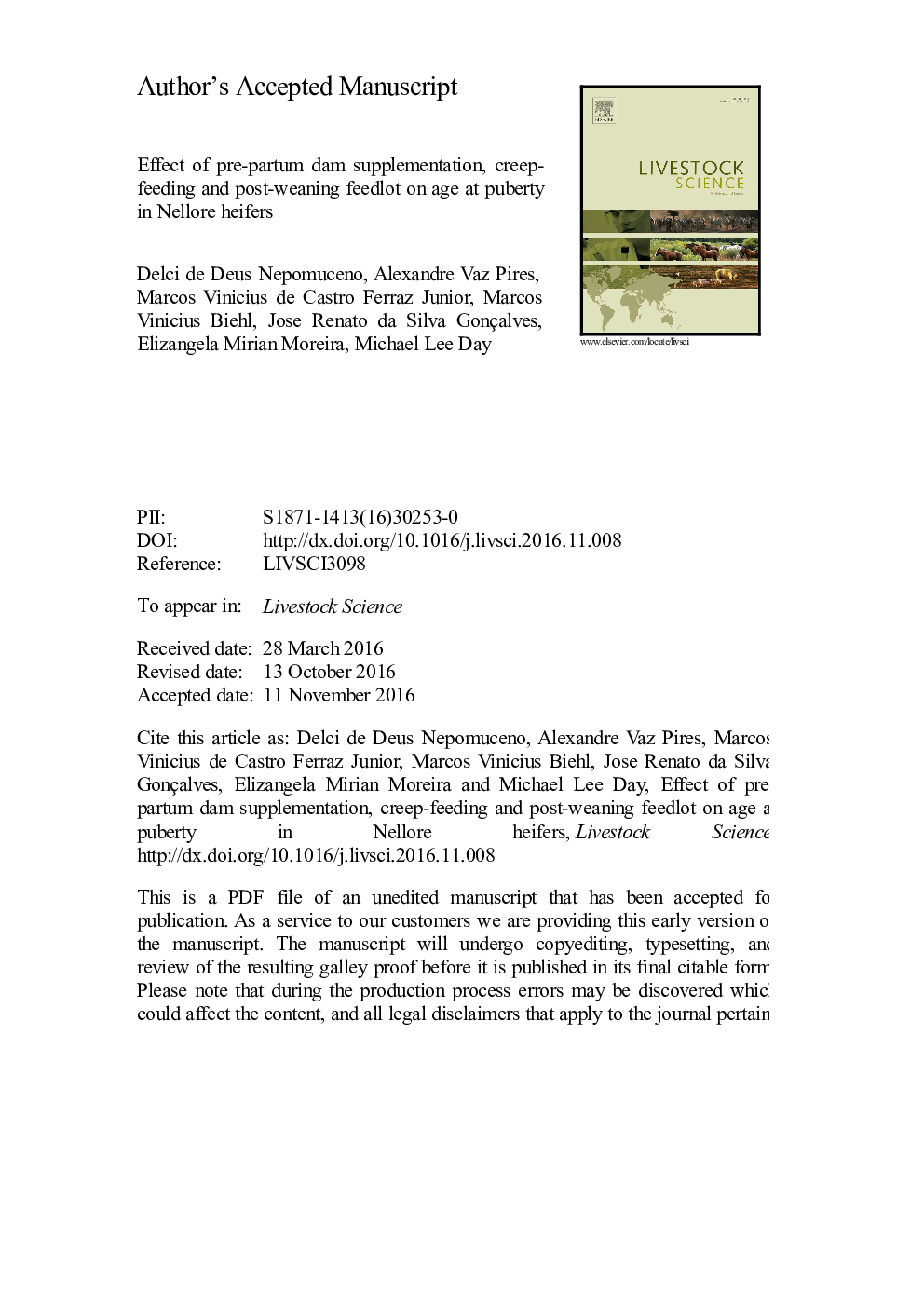| Article ID | Journal | Published Year | Pages | File Type |
|---|---|---|---|---|
| 5543158 | Livestock Science | 2017 | 21 Pages |
Abstract
The objective of this study was to evaluate the impact of three nutritional strategies and their interactions on age at puberty in Nellore heifers. The treatments were arranged in factorial design (2Ã2Ã2), including three periods of supplementation: Period I - Pre-partum dam supplementation with protein (n=122; 0.5 kg soybean meal/cow, daily) during the last trimester of gestation or no supplementation (n=115); Period II - Creep-feeding (n=120; 22% CP and 72% TDN) to heifer calves for 95 d before weaning or no creep-feeding (n=117); and Period III - Post-weaning feedlot from 7 to 11 month of age (n=117; 17% CP and 58% TDN) or no feedlot (n=120; only pasture). There was no interaction among periods of supplementation. At weaning, pre-partum dam supplementation (P=0.91) and creep-feeding (P=0.89) did not affect BW of heifer calves. At the end of the post-weaning feedlot (Period III) BW was greater (P<0.01) in the heifers supplemented (234.1±2.2 kg) than in pasture (187.2±2.1 kg) treatment and this difference was maintained through 26 months of age. The age at puberty was not influenced by pre-partum dam supplementation (P=0.88) or creep-feeding (P=0.57). However, the post-weaning feedlot treatment anticipated (P=0.06) the age at puberty. At 18 month of age, the percentage of pubertal heifers was increased by post-weaning feedlot (31.7 vs. 13.3%; P<0.01) and led to an increase of 10% in pregnancy rate at the same age. In conclusion, neither the cow supplementation nor creep feeding used in the present study anticipated puberty in Nellore heifers. However, enhanced nutrition during the post-weaning period was an effective method to anticipate puberty.
Related Topics
Life Sciences
Agricultural and Biological Sciences
Animal Science and Zoology
Authors
Delci D. Nepomuceno, Alexandre V. Pires, Marcos V.C. Junior, Marcos V. Biehl, Jose R.S. Gonçalves, Elizangela M. Moreira, Michael L. Day,
